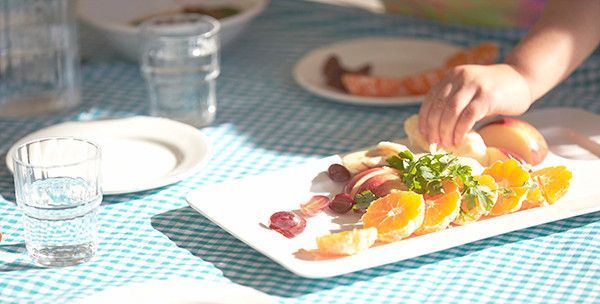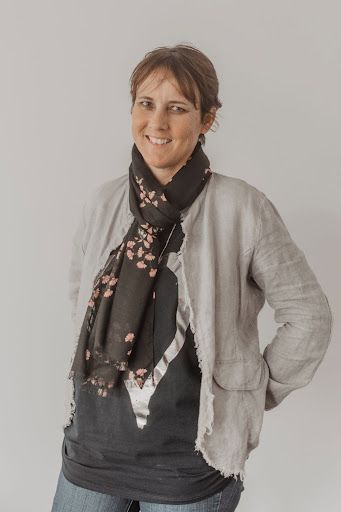
Well unless you are on a dreadful reality TV show such as “Married at first sight,” for most of us we would not dream of it. And yet this is EXACTLY what we do to our youngest children who have no choice in the matter.
Over the years I have seen a range of practices that frankly make me shiver to think about;
- Parents visiting to choose a service and starting their child the next week, or even worse the next day.
- Children starting in care who came to visit the service only once.
- Children starting in care with one teacher one day, and another teacher the next day.
- Crying children being passed from one teacher to another while they take their breaks, or attend to tasks.
- Multiple new children starting at the same time, on the same days. Children screaming as they are peeled from their mother’s arms.
In these situations, we are basically making a very young, vulnerable child move in with strangers into a highly stressful and frankly non existent arranged relationship.
So what should we be doing differently?
So what should we be doing differently?
How can we ensure children and families are given the best opportunity
for a positive, successful transition into our care that keeps relationships and the wellbeing of children at the heart?
Start by putting a stake firmly in the ground.
I have great faith that 99% of early childhood teachers want the best for our children. They understand WHY positive transitions into the centre are so important, and yet they continue with practices that are detrimental to children. I understand that this is a very contentious thing to say because for many teachers, they have no control over when children are enrolled, decisions made by management, and what parents may need.
And I hear you say “BUT parents don’t have time for a lengthy induction process!”
BUT if early childhood teachers don’t advocate for our youngest children, based on what they KNOW is right, then who will?! It is time for early childhood teachers to speak up, put their stake in the ground and say “we must do this differently.”
If you are a leader or manager of an ECE service who has the power to create policy, and set the “way we do things here,” then the wellbeing of children is firmly in your hands. Your induction and settling processes can make a difference to children and families.
Discuss your why as a team
Make time as a team to discuss what is important for new children and families and create shared agreement about why this is important.
How does this important process align with your service’s philosophy?
If relationships are truly at the heart of your philosophy, then how is this evident in your induction processes?

Create an induction strategy that includes;
Ask not only how many bottles does this child have but, how do they like to be held? What matters to your family? How are you feeling about leaving your child here? How can I support you in this? What do I need to know about your family’s culture that is important to you? And so much more!
A successful induction process will include plenty of time for children and their parents/family members to visit, spend time playing, observing and becoming familiar with this new place. Your service will have routines, rituals, rules and ways of doing things that are not likely to be familiar to this family.
1. Building a strong relationship
In any new relationship, time must be given to get to know one another. Parents and children will need multiple visits to the room they will be starting in so that they can begin to build a relationship with the people who will be caring for them. Assign a primary care giver or key teacher to this family, and ensure this person has time and space to be with this family when they come to visit. This doesn’t necessarily mean they have to sit with the parents the whole time, but certainly on the first couple of visits, the key teacher should be spending some time talking with the child’s parents or main family members.
This relationship building should be reciprocal – both parties getting to know each other. Remember you are a complete stranger, about to start taking care of this family’s most precious person. How can you share a little of yourself too, so that this family can begin to feel that you are trustworthy and no longer a stranger to them?
2. Getting to know you
2. Getting to know you
Many ECE services will have a “Getting to know you” type form that they ask parents to complete so that they know what this child’s needs are. Especially for babies e.g. how many bottles and when, what this child prefers to eat, when they sleep etc. BUT completing a form with the basic information about this child’s routines is often where this information exchange stops. It is surface level and basic only.
The key teacher needs to spend time actually getting to know this child and family at a deeper level. I therefore say, don’t simply ask the parents to complete the form. Sit with the family and complete the form together. Use the questions as an opportunity to build a stronger understanding of this young person that you will be caring for in relationship.
Ask not only how many bottles does this child have but, how do they like to be held? What matters to your family? How are you feeling about leaving your child here? How can I support you in this? What do I need to know about your family’s culture that is important to you? And so much more!
3. Visit, stay and play
Insist that the child has the opportunity to visit, stay and play for as many visits as necessary. There is no magic number of visits that works for every child. But think about how much there is for this child and their family to absorb and begin to understand in this new environment.
A successful induction process will include plenty of time for children and their parents/family members to visit, spend time playing, observing and becoming familiar with this new place. Your service will have routines, rituals, rules and ways of doing things that are not likely to be familiar to this family.
The more a child has the opportunity to play in this new space with their familiar family alongside them, the sooner they will start to feel confident in this place and with these new people. Children will take their cues from how their parents are feeling. When children are able to see their parents feeling relaxed in this place, they too come to know that this is somewhere I can trust.

4. Spend time engaging with the child in play.
Each time the child comes to visit, it is imperative that the key teacher spends time engaging with the child. Sit alongside their parents at first, talking and playing with the child (as much as they allow you to). Play together and show a genuine interest in getting to know this child.
How do they communicate both verbally and non verbally?
5. Show the child and their family where everything is, and what to do.
It goes without saying that YOU know where everything belongs, but parents do not. So, take time to show them where to put their child’s bag, where their child will sleep, where to sign in and out, what happens if there is an accident and they need to sign the accident record, where the bathrooms are (adults and children’s), introduce them to all staff and show them around the whole centre not just your room. Take time to tell them about your philosophy and how this influences your routines, curriculum and approach to conflict resolution.

6. Include the child in meal routines
In a home environment, this child is unlikely to be sitting at a table amongst lots of other children the same age and size as them. They may be in a high chair, or sit in front of the tv to eat. Their parents may spoon feed them, or they may walk around eating.
It is highly likely that your centre will have meal time routines that are unfamiliar to this child and family. And yet this is the time and space where we can connect with children over food. The meal table is where we nourish not only little stomachs, but also their minds, hearts and souls. For parents, often one of their biggest concerns will be around their child getting enough to eat and drink. Therefore, it is reassuring to parents to see that their child is eating and drinking with you.

7. Change the child's nappy together
The first time the child has their nappy changed in the centre, should ideally be done by their parent. The primary caregiver can take this opportunity to observe and build their understanding of how this intimate moment is usually handled by the parent. Does this child co-operate in this care moment? Do they prefer to stand up when they are changed?
Once the relationship between the primary caregiver and the child has begun to feel some connection, the next nappy change can be done by the key teacher with the parent alongside so that the child can see that this is a trusting relationship and can continue to build confidence in their new caregiver. This is also an opportunity to build understanding of this child’s usual bowel habits. An important thing to know.

written by
Angela Bush
Founder & CEO - ECE Learning Unlimited & Kebudel
Bachelor of Education (ECE), Diploma of Nursing, Diploma of Teaching (ECE)
Angela is a degree qualified and registered ECE teacher, multiple ECE centre owner, curriculum leader and business manager of ECE Learning Unlimited. She is also a registered nurse.
With over thirty years in ECE and centre ownership, Angela has a wealth of experience and knowledge in successful ECE leadership and centre management.
Over the years Angela has also had roles as a lecturer in ECE, nanny, teacher, and mentor.
